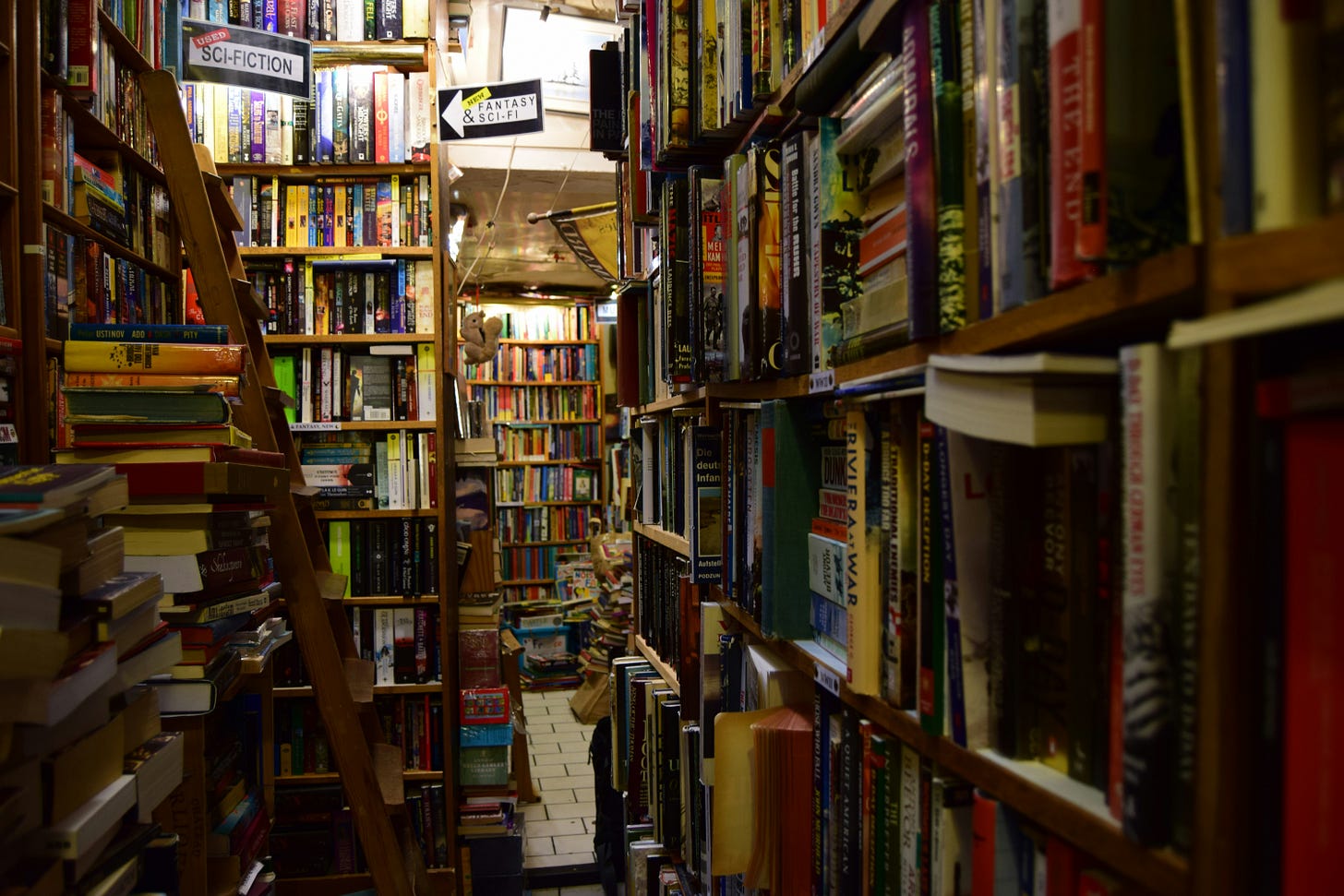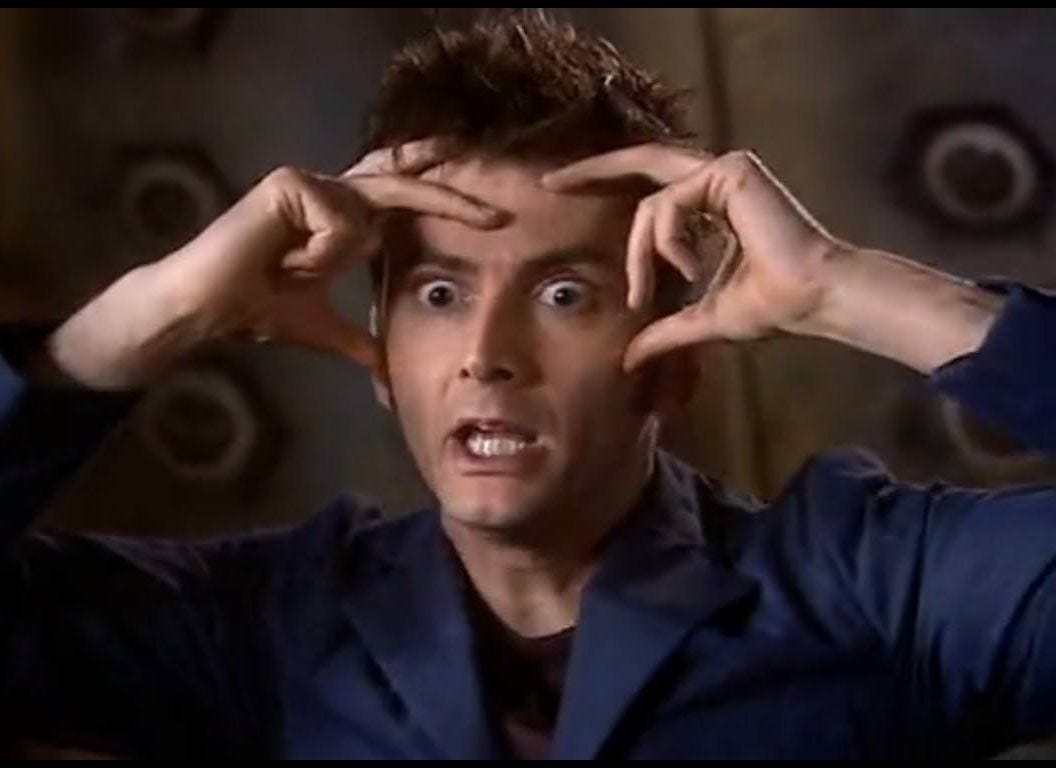Hello again, Fellow Adventurer!
Well, the year is hurtling towards Christmas and the start of 2025, which means it’s that liminal time of the year where you’re in-between the old year and the new year and finishing projects and starting new projects. It’s also always the busiest time at work – during which I have to remind myself that, yes, every year it gets this busy and you get frustrated and yet every year you manage to make it through to the other side.
I haven’t only been stuck into my day job work, however and, along with a lot of crocheting, I have also done quite a bit of reading and even managed some writing as well.
Straying into a research labyrinth (and not even carrying a ball of thread) and finding some story inspiration along the way
One of the most recent research labyrinths I’ve strayed into1, started when paging through the Spring 2023 issue of PieceWork Magazine2 when the article about thangka appliqué, titled “Discovering Thangkas: Tibetan Appliqué Fabric Scrolls” by Leslie Rinchen-Wongmo caught my attention. The strange thing is that I’ve read it before, and even listened to the podcast interview with the author in 2022.3 This time, however, the silk-wrapped horsehair thread used to outline the different pieces of the appliqué sent my neurons firing.
Of course, my first thoughts were about how you would go about wrapping the horsehair with silk thread. For one, where do you get the horse hair?4 And exactly how fine are the silk strands? Is it similar to embroidery thread? Is it a single filament?5
Now I first need to explain that I kept silkworms when I was in primary school. This is not weird among Afrikaans kids6 and just about everyone I knew at school kept them (the response by some of my co-workers when they found out about keeping silkworms as pets made it clear that it is weird7).8 Therefore, I know how fine a single filament of silk is when it’s produced by the worm and thinking about wrapping that fine a fibre around the horsehair seems nigh impossible.
A quick search of Leslie’s website brought me to a post aptly titled: “Where Do You Get Horsehair?”. In the post, she notes that the silk is wrapped around three strands of horse hair held together and then writes:
“The microscopic ridges on the hair grasp the fine filaments of the silk, keeping the thread in place. And the horsehair is wonderfully malleable, following whatever curve I guide it around and folding neatly into crisp points.”
Which just goes to show how much there is to learn just about the fibres used in textile arts, nevermind the different types of textile crafts that you can learn. She also mentions that the hair being sold by Lacis can be used for gimp. Gimp? I thought. What on earth is ‘gimp’? I strayed deeper into the labyrinth, finding Mary Corbet’s wonderful website after a quick search and, on the site, the posts “Thread Talk: Silk Gimp!” and “Thread Talk: Silk Gimp vs. Silk Gimp”. Turns out, gimp is a type of cord:
“‘Gimp’ is not really anything new. Gimp is simply cord. Silk gimp used in embroidery is not new, either. It’s been around for hundreds of years, was prevalent in 17th century embroidery, disappeared for a while, and has been recently resurrected and introduced to the needlework market.”
By this time, my head was spinning at the ways in which this type of thread – or simply different types of threads – could be used in The Ruon Chronicles and Threads and, not only does thread9 in itself carry a lot of symbolism, but so does hair.
And, of course, you have Samson and Rapunzel, but also keeping a lock of a loved ones hair, giving someone a lock of hair, and Galadriel giving Gimli three strands of her hair in The Lord of the Rings. Then, in the depths of my childhood memories, rose the memory of a craft project I once saw in a magazine; flowers made from hair. It was step-by-step and had photos and everything. I remember that I thought it incredibly weird as, at that time, I didn’t know about things like mourning jewellery that contain hair10 and other Regency and Victorian hair work.
That said, I think that I’m leaning more towards using these ideas (vague as they are at the moment) in Threads, as I also don’t want to make the magic system in The Ruon Chronicles too convoluted.
Reading and writing (and editing)
I guess the thing with story ideas is that they need to percolate a bit first before they become clear. And, while that’s happening, it’s best to just keep on reading and exploring and writing and creating, trusting that your brain and unconscious will do their thing. And I have been reading quite a bit and listening to a lot of podcasts thanks to multiple bouts of flu and upper respiratory tract infections (oh joy).11
The Neverending Saga of Where the Stars Used to Sing
This does mean that I’ve fallen behind on my self-imposed Plan of Action to (at long last) finish Where the Stars Used to Sing and now I need to figure out Plan of Action 2.0 if I’m to get it done by the time I go on holiday.12 Although I’m not going away, I do have plenty of other plans for my time off.13
The editing for Where the Stars Used to Sing is quite involved for some of the stories, though they aren’t complete rewrites. I am adding extra detail to most of the stories just to pull them all together and that’s what’s really taking the most time – especially when I’m also trying to avoid falling down any more rabbit holes.
One or two of the stories originally written for Where the Stars Used to Sing will, however, be moved to the follow-up collection (tentatively titled When Ships Sailed the Skies) and one or two will have to be abandoned14. Taking all of that into account does mean that I should be able to finish the editing in time. And then I’ll take some other fiction off the back burner.
Reading and listening
Along with podcasts, I’ve also listened to some audiobooks. I’m still busy listening to The Fires of Heaven (The Wheel of Time, book 5) by Robert Jordan, but I’ve also finished re-listening Soul Music and Snuff by Terry Pratchett15 and Why Mummy Doesn’t Give a ****! By Gill Sims.16 While I rarely seem to read non-genre fiction17, there are a few authors whose books I truly enjoy – and luckily my sister is great at knowing what I’d enjoy and passes those on to me.
I also listened to Fahrenheit 451 by Ray Bradbury about two months ago, which led me to also listen to George Orwell’s 1984 (this version, which I enjoyed) and reading the 1909 story “The Machine Stops” by E.M. Forster18, which just floored me. I never realised when it was first published when I read it years ago19. The dystopian fiction spiral came about because of a short story I wanted to write, but, while I had the setting and MC figured out, the actual plot needs a lot more work than I have time for right now. So, off to the back burner it goes.
New Music Alert!
Radical Face released a new album! It’s called Mixtape, and you can find the liner notes over here on his website. To be honest, it feels as if his Discord is one of the last vestiges on the interwebs where people are simply nice to each other. You can listen to the album over here.
That’s it from me for now; I’d better go and finish up all those edits!
Stay safe,
Carin
Luckily, I did not find a Minotaur.
The Long Thread Podcast, October 2022: “Leslie Rinchen-Wongo, Thangka Appliqué Artist”.
I’ll admit I looked over at the horses in the paddock here at Bag End and went ‘hmmm’.
And is filament even the right word? *searches around* Indeed it is!
At least those in Johannesburg.
I can completely understand my co-worker’s perplexity when someone on her community group asked one morning if someone had silkworms when she didn’t have the silkworms-as-pets context.
We also knew where every mulberry tree in the neighbourhood stood in order to get leaves for the worms to eat.
And textiles, sewing, etc., etc.
For example this gold mourning ring from the V&A Museum.
It’s like my body wanted to see how many times I can see a GP in one month to make up for not seeing a GP the rest of the year.
Not to mention my late start on making Christmas presents. Another annual tradition, it seems.
Probably too many, but what’s new.
At least for these projects.
Read by Nigel Planer.
Read by Gabrielle Glaister.
Don’t get me started on my opinion about the inane category name “chick lit”. Hint: It’s on the same level as someone saying that genre fiction is inherently meaningless because it doesn’t deal with “The Real World”. Or, come to think of it, wanting me to call myself a [insert some kind of description here] “girlie”.
This is a link that downloads the story as a PDF from the UC Davis Computer Science website.
The way I seem to keep track of time, probably a good twenty years ago.







